Jane M. Bardal, Mark Fleisher, Sue Houser, Paula Paul, and Cassie Sanchez represent the diverse membership of SouthWest Writers (SWW) with 2023 releases in the genres of biography, poetry, middle grade fiction, contemporary fiction, and fantasy, respectively. Their releases couldn’t fit in this year’s interview schedule, but look for new interviews or updates for most of these authors in 2024.
A list of interviewed SWW authors with 2023 releases is included at the end of this post.
 Colorado’s Mrs. Captain Ellen Jack: Mining Queen of the Rockies (The History Press, May 2023) by Jane M. Bardal. “You get off this property.” In 1887, Captain Ellen E. Jack backed up her orders with a shotgun as she stood at the entrance to her Black Queen Mine. To profit from the mine, she engaged in many other battles with lawyers and capitalists who tried to wrest her ore away. Mrs. Captain Jack contributed to the myth of the West by crowning herself the Mining Queen of the Rockies as she entertained tourists at her roadhouse near Colorado Springs. This is a captivating biography of a pioneering woman who fashioned a legacy through true tenacity and maybe even a few tall tales.
Colorado’s Mrs. Captain Ellen Jack: Mining Queen of the Rockies (The History Press, May 2023) by Jane M. Bardal. “You get off this property.” In 1887, Captain Ellen E. Jack backed up her orders with a shotgun as she stood at the entrance to her Black Queen Mine. To profit from the mine, she engaged in many other battles with lawyers and capitalists who tried to wrest her ore away. Mrs. Captain Jack contributed to the myth of the West by crowning herself the Mining Queen of the Rockies as she entertained tourists at her roadhouse near Colorado Springs. This is a captivating biography of a pioneering woman who fashioned a legacy through true tenacity and maybe even a few tall tales.
Colorado’s Mrs. Captain Ellen Jack is available on Amazon.
 Knowing When: Poems (Mercury HeartLink, March 2023) by Mark Fleisher. Under the mantle of its intriguing title, Mark Fleisher writes of sadness and tragedy, lightens the mood with poems about love, nature, even baseball, as well as a mirthful look at technology. Fleisher’s blend of narrative and lyric styles cut to the heart of the matter, showing the ability to speak volumes in a minimum number of lines. His eclectic collection also invites the reader to contemplate questions posed in the title poem and other selections.
Knowing When: Poems (Mercury HeartLink, March 2023) by Mark Fleisher. Under the mantle of its intriguing title, Mark Fleisher writes of sadness and tragedy, lightens the mood with poems about love, nature, even baseball, as well as a mirthful look at technology. Fleisher’s blend of narrative and lyric styles cut to the heart of the matter, showing the ability to speak volumes in a minimum number of lines. His eclectic collection also invites the reader to contemplate questions posed in the title poem and other selections.
You’ll find Knowing When: Poems and more of Mark’s poetry on his Amazon author page.
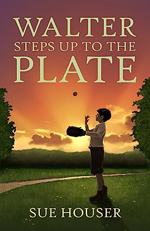 Walter Steps Up to the Plate (Kinkajou Press, October 2023) by Sue Houser. Walter will do anything to help his mother when she’ s diagnosed with tuberculosis, but does that include standing up to Al Capone? Twelve-year-old Walter wants to spend the summer of 1927 watching his beloved Chicago Cubs play baseball. Instead, Walter must leave everything he knows and loves to accompany his mother to Albuquerque, New Mexico — a place he has never been to with relatives he has never met. To help with expenses, Walter gets a paper route. But the situation gets worse when his mother is admitted to a sanatorium and needs expensive surgery. A chance encounter with the gangster, Al “ Scarface” Capone might change his mother’ s fortunes and get her the surgery she needs. But to do it, Walter will become indebted to the notorious gangster.
Walter Steps Up to the Plate (Kinkajou Press, October 2023) by Sue Houser. Walter will do anything to help his mother when she’ s diagnosed with tuberculosis, but does that include standing up to Al Capone? Twelve-year-old Walter wants to spend the summer of 1927 watching his beloved Chicago Cubs play baseball. Instead, Walter must leave everything he knows and loves to accompany his mother to Albuquerque, New Mexico — a place he has never been to with relatives he has never met. To help with expenses, Walter gets a paper route. But the situation gets worse when his mother is admitted to a sanatorium and needs expensive surgery. A chance encounter with the gangster, Al “ Scarface” Capone might change his mother’ s fortunes and get her the surgery she needs. But to do it, Walter will become indebted to the notorious gangster.
Look for Sue at SueHouser.com and on her Amazon author page.
 The Last of the Baileys (March 2023) by Paula Paul. Trudy Bailey Walters, who is in her 70s, thinks the old house she just bought for back taxes might be haunted. Adam Bailey, who Trudy has known since childhood, says he will help Trudy find the source of the “haunting,” but he doesn’t want Trudy to know the truth. Although Trudy has no intention of taking in boarders, she soon finds several people living with her, including a young mother with a rebellious teenager and an undocumented immigrant who is searching for her child. While they all look for the source of the haunting, Adam convinces them to help find the missing child, including a reluctant Trudy. Illegal escapades, unexpected friendships, and startling conclusions ensue.
The Last of the Baileys (March 2023) by Paula Paul. Trudy Bailey Walters, who is in her 70s, thinks the old house she just bought for back taxes might be haunted. Adam Bailey, who Trudy has known since childhood, says he will help Trudy find the source of the “haunting,” but he doesn’t want Trudy to know the truth. Although Trudy has no intention of taking in boarders, she soon finds several people living with her, including a young mother with a rebellious teenager and an undocumented immigrant who is searching for her child. While they all look for the source of the haunting, Adam convinces them to help find the missing child, including a reluctant Trudy. Illegal escapades, unexpected friendships, and startling conclusions ensue.
You’ll find Paula on her website at PaulaPaul.net and The Last of the Baileys on Amazon. Many of her other novels are available on her Amazon author page.
 Conquering the Darkness: The Darkness Trilogy – 3 (December 2023) by Cassie Sanchez. Ultimate victory is won within the battlefield of the soul. Without his magic or his memories, Jasce Farone finds himself in the frozen realm of Balten, suffering the lingering wounds from his last battle and haunted by a woman he can’t recall. He tries to be the man everyone expects him to be—the one they remember—but the spindly fingers of revenge wrap around his heart while a past he’s never confronted escorts him further into darkness. In his journey, Jasce will need to trust those who fight by his side while battling the demons within if he wants to preserve magic and prevent tyranny from spreading throughout the land. If he succeeds, then a chance at love and peace is within his grasp.
Conquering the Darkness: The Darkness Trilogy – 3 (December 2023) by Cassie Sanchez. Ultimate victory is won within the battlefield of the soul. Without his magic or his memories, Jasce Farone finds himself in the frozen realm of Balten, suffering the lingering wounds from his last battle and haunted by a woman he can’t recall. He tries to be the man everyone expects him to be—the one they remember—but the spindly fingers of revenge wrap around his heart while a past he’s never confronted escorts him further into darkness. In his journey, Jasce will need to trust those who fight by his side while battling the demons within if he wants to preserve magic and prevent tyranny from spreading throughout the land. If he succeeds, then a chance at love and peace is within his grasp.
Visit Cassie on her website at CassieSanchez.com, on Facebook, and her Amazon author page.
SWW Author Interviews: 2023 Releases
Marty Eberhardt
Bones in the Back Forty
William Fisher
The Price of the Sky: A Tale of Bandits, Bootleggers, and Barnstormers
Patricia Gable
The Right Choice
Cornelia Gamlem
The Decisive Manager: Get Results, Build Morale, and Be the Boss Your People Deserve
Joyce Hertzoff
Train to Nowhere Somewhere: Book 1 of the More Than Just Survival Series
Brian House
Reich Stop
T.E. MacArthur
The Skin Thief
Nick Pappas
Crosses of Iron: The Tragic Story of Dawson, New Mexico, and its Twin Mining Disasters
Marcia Rosen
Murder at the Zoo
Lynne Sebastian
One Last Cowboy Song
JR Seeger
The Enigma of Treason
Suzanne Stauffer
Fried Chicken Castañeda
Jodi Lea Stewart
The Gold Rose
Patricia Walkow
Life Lessons from the Color Yellow
R. Janet Walraven
LIAM: The Boy Who Saw the World Upside Down
Donald Willerton
Death in the Tallgrass
Linda Wilson
Waddles the Duck and
Cradle in the Wild: A Book for Nature Lovers Everywhere



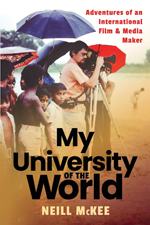

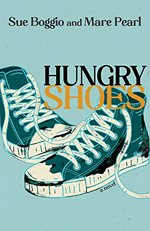
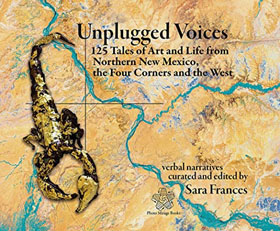
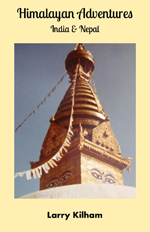
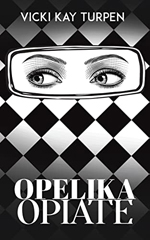

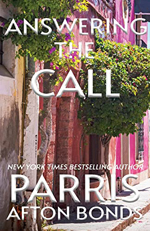
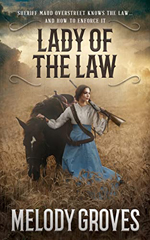
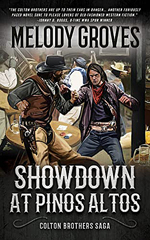




 KL Wagoner (writing as Cate Macabe) is the author of This New Mountain: a memoir of AJ Jackson, private investigator, repossessor, and grandmother. Kat has a speculative fiction blog at
KL Wagoner (writing as Cate Macabe) is the author of This New Mountain: a memoir of AJ Jackson, private investigator, repossessor, and grandmother. Kat has a speculative fiction blog at 







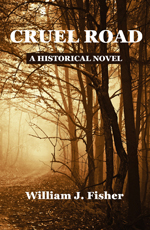

 Su Lierz writes dark fiction, short story fiction, and personal essays. Her short story “Twelve Days in April,” written under the pen name Laney Payne, appeared in the 2018 SouthWest Writers Sage Anthology. Su was a finalist in the 2017 and 2018 Albuquerque Museum Authors Festival Writing Contest. She lives in Corrales, New Mexico, with her husband Dennis.
Su Lierz writes dark fiction, short story fiction, and personal essays. Her short story “Twelve Days in April,” written under the pen name Laney Payne, appeared in the 2018 SouthWest Writers Sage Anthology. Su was a finalist in the 2017 and 2018 Albuquerque Museum Authors Festival Writing Contest. She lives in Corrales, New Mexico, with her husband Dennis.























